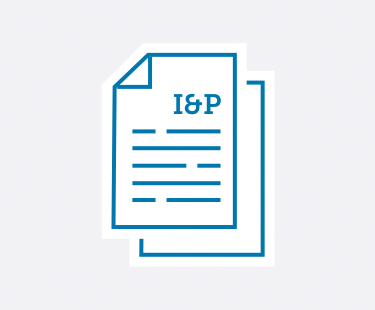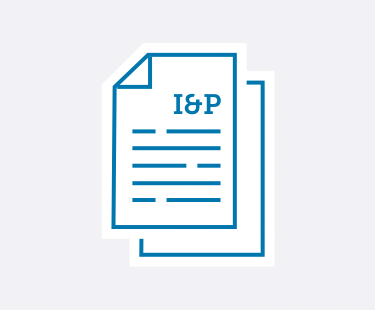

Learn practical strategies to handle emerging trends and leadership challenges in private schools.
No matter if you’re a School Head, Admission Director, Development Director, Board member, or any other private school administrator—Ideas & Perspectives®, ISM’s premier private school publication, has strategic solutions for the pervasive problems you face.
- Tuition not keeping pace with your expenses? In I&P, explore how to use strategic financial planning to create your budget and appropriately adjust your tuition.
- Enrollment dropping off? Discover how to implement the right admission and enrollment management strategies that engage your community—and fill your classrooms.
- Trouble retaining teachers? Learn how you can best support your teachers using ISM’s Comprehensive Faculty Development framework. Your faculty members will become more enthusiastic about their roles—which ultimately improves student outcomes.
- Fundraising campaigns not as successful as you’d hoped? Implement ISM’s practical advice and guidance to build a thriving annual fund, construct an effective capital campaign, and secure major donors—no matter your community size or location.
- Not sure how to provide professional development—for you and your staff? Learn ways to develop and fund a successful professional development strategy. You can improve teacher-centered satisfaction and growth, which in turn strengthens student-centered learning.
- Problematic schedule? You can master the challenges of scheduling with the help of ISM’s practical advice, based on our experience with hundreds of schools and our time-tested theories.
- And so much more.
I&P has shared targeted research, up-to-date insight, and sound theory with school leaders since 1975. More than 8,500 private school decision-makers find the answers to their schools’ administrative and governance matters in our advisory letter. We give you the strategic answers you need.
As an ISM Silver or Gold member, you not only receive issues online and in print 10 times a year, but you have access to 900+ articles in our web archive. Need help? It’s at your fingertips! Learn more and sign up for ISM's membership here.
Search
See the articles from our latest issue of Ideas & Perspectives.
The Wise Use of Your School’s Disciplinary Data
Volume 39 No. 6 // May 12, 2014
As School Head and academic leader, consider taking a more systematic approach to your student discipline records. When a child misbehaves, school administrators tend to attribute his or her behavior to situational factors at home or within their peer relationships. Repeated misbehavior points to a dispositional issue. Data, however, can show patterns in students’ behavior that reveal that the school environment has a tremendous influence on student behavior. It is clear from ISM visits to hundreds of schools that both Division Heads and their faculty are not mining their discipline records for information to determine policy, process, and direction. Often, it is hard for schools to even locate discipline records that are stored in any methodical and intentional way. Yet discipline (both academic and behavioral) can be telling indicators in your divisions.
1. Already a member? Click here to login.
2. Not a member? Click here to become a member.
3. Not sure? We'll help you figure it out.
Board Committee Structure and Function
Volume 39 No. 5 // April 21, 2014
Your Board’s committee structure, far from set in stone, should be flexible and emanate from the school’s quadrennial strategic plan. Some committees—such as the Finance Committee—will always have tasks to accomplish. The strategic concept, however, is that there are few standing committees in the old sense of being listed in bylaws as necessarily in operation indefinitely, with a permanent set of responsibilities listed in the bylaws committee-by-committee. The extreme codification of Board structure is a poor fit for ISM’s “strategic Board” concept, in which most Board committees’ tasks are delineated annually and, as a rule, have their antecedents in the school’s strategic plan.
1. Already a member? Click here to login.
2. Not a member? Click here to become a member.
3. Not sure? We'll help you figure it out.
The Division Head: A New Reality
Volume 39 No. 5 // April 21, 2014
Every member of the Academic Management Team must understand how to operate as the CEO—the School Head—does (mission-based and strategically oriented). Our understanding of the changing role of the Division Head now emphasizes this “headship” aspect of the role. In the past, the Division Head was bureaucratic—involved in curriculum development, policy setting, and handbook creation. The position rarely involved meaningful discussions with colleagues in other divisions, let alone in the Advancement or the Business Office. This will no longer suffice in today’s private-independent school. The Division Head now has one primary function and two supporting functions.
1. Already a member? Click here to login.
2. Not a member? Click here to become a member.
3. Not sure? We'll help you figure it out.
12 Steps to an Effective Extended Day Program
Volume 39 No. 5 // April 21, 2014
Working parents need extended day programs that are well-designed, convenient, and flexible—and these parents are willing to pay for quality service. Yet, extended day programs are still managed in many schools as though they were side operations. To make these programs real contributors to the overall solvency and marketability of your school, consider the following steps.
1. Already a member? Click here to login.
2. Not a member? Click here to become a member.
3. Not sure? We'll help you figure it out.
Conflict Resolution in the Context of Your Parent Retention and Education Plan
Volume 39 No. 4 // March 24, 2014
Today’s parents tend to view their child’s private-independent school with a profound sense of ownership. Since they “make payments” to the institution, parents reason that their privileges should include making explicit demands on teachers, on administrators, on Trustees, and on the curriculum itself. If granted, some of the demands would alter educational and programmatic policy and practice; others would provide a de facto waiver for that parent’s own child in regard to school policies and practices. The obvious counterweight should be added: Parents are sometimes right. The extent and difficulty of a third-grade teacher’s homework assignments may, in fact, be out of line. An upper-school history teacher’s response to one student’s tardiness may have been extreme. Your middle-school physical education courses may be ill-conceived or poorly executed. The Lower School Director may unreasonably procrastinate in returning parents’ phone calls. The Board may, in fact, be uncommunicative or secretive as a matter of habit, rather than selectively (that is, for special cause).
1. Already a member? Click here to login.
2. Not a member? Click here to become a member.
3. Not sure? We'll help you figure it out.
Build Your Volunteer Corps: Rights vs. Responsibilities
Volume 39 No. 4 // March 24, 2014
Your school depends on volunteers to provide an array of services, from helping out in the classroom to handling the nuts and bolts of the annual auction. These key constituents support the professional staff in just about every aspect of the school’s life. Their time and talent are essential and invaluable in enhancing the school’s ability to fulfill its mission.* As Director of Parent Relations (or another administrator who oversees volunteers), one of your responsibilities is to build and maintain a reliable volunteer force. To meet this goal, ensure the work is rewarding for both the individual and the institution. Value and appreciate those who give freely of their time and skills. For its part, the school needs to be assured that everyone working in the school clearly understands expectations.
1. Already a member? Click here to login.
2. Not a member? Click here to become a member.
3. Not sure? We'll help you figure it out.
Conflict Resolution: Moving From Risk and Toxicity to Predictability and Support
Volume 39 No. 3 // March 3, 2014
A positive work environment has a direct impact on your school’s ability to retain and attract highly qualified, mission-appropriate faculty and staff—the people you rely on to bring your program to life. As School Head, you know from experience how quickly the positive tone you strive to maintain can deteriorate. This is especially true when one person is frustrated with the school’s requirements or has a conflict with a colleague, and shares his/her views with increasing intensity and frequency. Minor disgruntlement can lead to full-blown toxicity, spreading quickly from individuals to small clusters and larger groups if there is no policy in place to resolve the dilemma and promote healing.
1. Already a member? Click here to login.
2. Not a member? Click here to become a member.
3. Not sure? We'll help you figure it out.
Form 990: A Game-Changer for Strategic Boards
Volume 39 No. 3 // March 3, 2014
In 2008, the IRS issued important changes to Form 990 that have important Board implications—especially concerning compensation for the School Head. Required for most nonprofit organizations, Form 990 is designed to report annual information concerning financials, programmatic achievements, executive compensation, and governance policies. The form is intimidating—but compliance is mandatory. Every Board member must understand the critical aspects of the form.
1. Already a member? Click here to login.
2. Not a member? Click here to become a member.
3. Not sure? We'll help you figure it out.
Six Questions to Answer Before Diversifying Your Middle and Upper School World Language Offerings
Volume 39 No. 3 // March 3, 2014
Global awareness and cultural literacy are themes associated with contemporary learning outcomes. While these outcomes may be achieved through enhancements in social science and English curriculums, they are manifested in world language instruction. Some school leaders seek to diversify their world language offerings. While languages such as Mandarin Chinese and Arabic may be useful languages for students to learn given their importance to global economic and political issues, adding a new language carries with it significant risk. It can negatively impact a school’s existing language program(s), schedule, and bottom line. ISM has cautioned schools to evaluate this issue before adding a new language in lower schools, and seeks here to help guide those considering it for their middle and/or secondary school.
1. Already a member? Click here to login.
2. Not a member? Click here to become a member.
3. Not sure? We'll help you figure it out.
Full Disclosure of Non-Tuition Expectations During Admission
Volume 39 No. 2 // February 10, 2014
Every fall, new families enter your school. Many of them have had little to no experience with a private-independent school—either as a student or as a parent. For these parents, the admission process can appear to be a series of multiple, unusual, and unexpected steps to gain admittance for their child. After all, for a public school, usually the family’s only schooling experience, it is just a formality—call the school in the spring and let them know your child will be attending the coming year. Add to the process the challenge of absorbing all the other costs that are associated with being part of an independent school—annual fund, extra fees for trips, T-shirts, Parent Association dues, etc. Often the first few fees will slip by without comment by the family. (New parents are still in the “honeymoon” phase with the school and tend to accept the earliest fees.) Then, sometime in October, the annual fund appeal arrives. This is usually when the new family begins to become agitated.
1. Already a member? Click here to login.
2. Not a member? Click here to become a member.
3. Not sure? We'll help you figure it out.


